Business
India’s Capital Market Reforms: Sebi Eases IPO Norms, Tags REITs As Equity, Slashes MF Exit Load
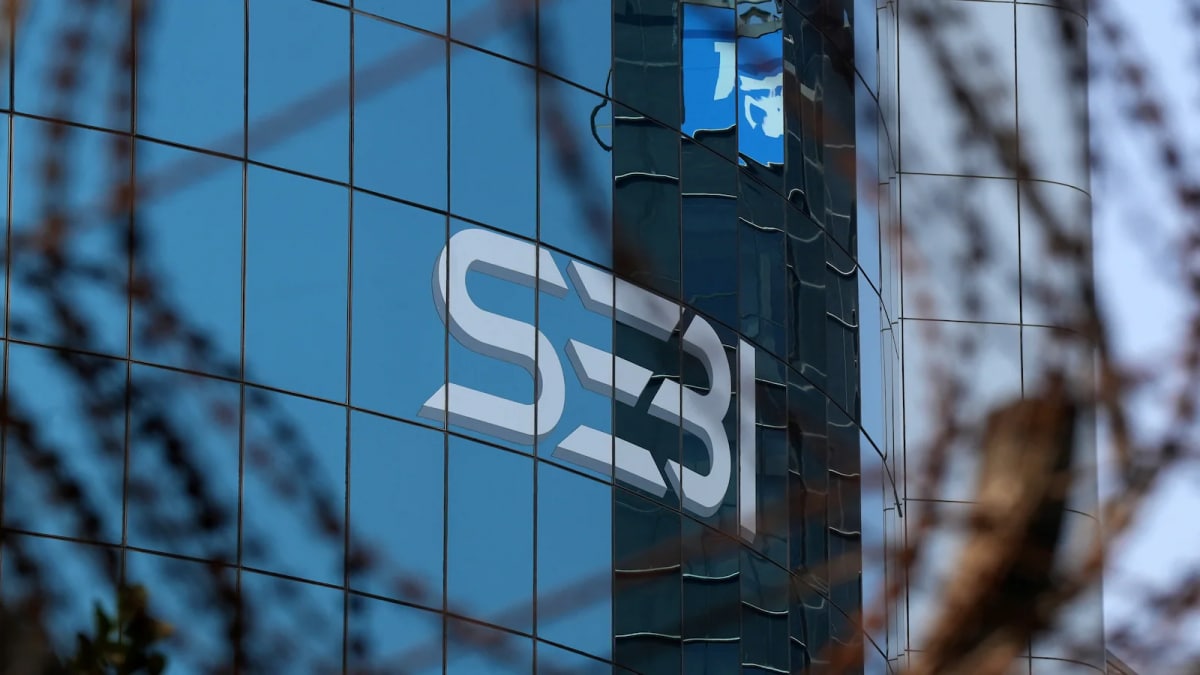
Last Updated:
Sebi announces a slew of reforms across capital markets, easing IPO norms for large firms, simplifying foreign investor access, and tightening governance in market institutions.

Sebi Board Meeting Outcome.
The Securities and Exchange Board of India (Sebi) on Thursday announced a slew of measures for capital markets, including easing IPO norms for large companies, simplifying foreign investor access, and tightening governance in market institutions. The decisions were taken at the regulator;s board meeting on September 12.
IPO Norms Relaxed For Large Companies
In a major relief for companies eyeing large public floats, Sebi has eased the minimum public shareholding (MPS) requirements for firms with a market capitalisation of Rs 50,000 crore and above.
Companies valued between Rs 50,000 crore and Rs 1 lakh crore can now list with 8% public float, down from 10%. They will also get five years to raise their MPS to 25%, compared with three years earlier.
Those with over Rs 1 lakh crore market cap will be required to list only 2.75%, down from 5%.
For companies exceeding Rs 5 lakh crore market cap, the IPO float requirement has been cut to 2.5%.
These firms will now get 10 years instead of five to meet the 25% MPS norm.
The changes are expected to smoothen the listing path for giants such as Reliance Jio Infocomm and the National Stock Exchange (NSE), which have been awaiting clarity on IPO requirements.
Anchor Investor Framework Strengthened
The markets regulator also revamped the anchor investor framework to deepen institutional participation in IPOs.
The anchor portion has been raised from 33% to 40% of the institutional quota.
While one-third of the anchor book remains reserved for mutual funds, fresh space has been created for insurers and pension funds.
The number of anchor investors permitted per ₹250 crore of issue size has been raised from 10 to 15.
“This is aligned with global best practices and will broaden the quality of long-term institutional investors,” SEBI chairperson Madhabi Puri Buch said after the meeting.
SWAGAT-FI: A New Window For Trusted Foreign Investors
In a move aimed at attracting long-term, stable foreign capital, Sebi launched the Single Window Automatic and Generalised Access for Trusted Foreign Investors (SWAGAT-FI) framework. The new system simplifies registration for low-risk investors such as sovereign wealth funds, pension funds and central banks, allowing them:
Unified registration as both Foreign Portfolio Investors (FPIs) and Foreign Venture Capital Investors (FVCIs).
A single demat account to invest across routes.
Longer registration validity of 10 years, up from 3-5 years currently.
According to Sebi, these “trusted” investors represent nearly 70% of FPI assets under custody, and the simplified regime will significantly enhance India’s attractiveness as an investment destination.
REITs, InvITs Get Boost
To deepen participation in infrastructure and real estate investment vehicles, SEBI has broadened the definition of strategic investors in REITs and InvITs to include qualified institutional buyers, FPIs, pension funds, provident funds and insurers.
Further, REITs will now be classified as equity instruments, making them eligible for inclusion in equity indices, while InvITs will remain under the hybrid category. The move is expected to boost liquidity and mainstream REIT investments.
Mutual Fund Incentives, Exit Load Cut
Sebi has introduced new measures to encourage financial inclusion through mutual funds.
Exit load cap reduced from 5% to 3%, aligning with industry practice.
Distributors will be incentivised for:
- Onboarding new women investors.
- Bringing in investors from B-30 cities (beyond the top 30), with incentives capped at Rs 2,000 per investor.
Stronger Governance for MIIs
To strengthen governance in stock exchanges, clearing corporations and depositories — collectively termed Market Infrastructure Institutions (MIIs) — SEBI has mandated the appointment of two Executive Directors (EDs) as key managerial personnel.
One ED will oversee critical operations while the other will be responsible for compliance, risk management and investor grievances.
Stricter Norms for Related Party Transactions
For listed companies, Sebi has introduced a new turnover-linked materiality threshold for related party transactions (RPTs), with an absolute ceiling of Rs 5,000 crore. The move is aimed at protecting minority shareholders while offering operational flexibility to large firms.
AIF Framework Liberalised
Alternative Investment Funds (AIFs) also received regulatory flexibility.
Introduction of AI-only schemes (for accredited investors) with lighter compliance requirements.
Large Value Fund (LVF) threshold lowered from Rs 70 crore to Rs 25 crore, making it easier for investors to qualify.
Other Decisions
Registrars to an Issue (RTAs) will now come under activity-based regulation.
Investment advisers and research analysts will find it easier to qualify, with graduates from any stream eligible, subject to NISM certification.
Sebi plans to expand its local offices to more cities for better investor outreach.
The consultation on introducing a Closing Auction Session (CAS) in equity markets has been extended till September 19.

Haris is Deputy News Editor (Business) at news18.com. He writes on various issues related to personal finance, markets, economy and companies. Having over a decade of experience in financial journalism, Haris h…Read More
Haris is Deputy News Editor (Business) at news18.com. He writes on various issues related to personal finance, markets, economy and companies. Having over a decade of experience in financial journalism, Haris h… Read More
September 13, 2025, 08:42 IST
Read More
Business
Honda Motor to make India global mfg hub for new EV – The Times of India

TOKYO: Japanese carmaker Honda Motor will make India a global manufacturing hub for its upcoming electric, Honda 0 α (alpha), whose prototype was unveiled at the Japan Mobility Show.The car has been developed for the Indian and Japanese markets, apart from other Asian countries. Its India debut will be in fiscal 2026-27. Honda Motor Co president and global CEO Toshihiro Mibe said the launch will further the company’s goal to achieve carbon neutrality and zero traffic collision fatalities worldwide by 2050.Honda 0 α (alpha) will be manufactured at Honda’s plant in Alwar, Rajasthan. Honda also launched other electric prototypes, including a green saloon. Honda India MD and CEO Takashi Nakajima said India is one of the top three markets for the company globally in terms of corporate focus and investments. Speaking on the eve of Honda’s new car launch at the Japan Mobility Show, Nakajima said, “Our top management has decided to focus on India among the three key markets for Honda’s future growth alongside the US and Japan.” Nakajima acknowledged that while Honda’s business scale in India is still low compared to the US or Japan, its future ambitions are substantial.He admitted that expanding the product line-up in India will take several years, but hinted at imminent progress. “India is one of the most promising and exciting markets in the world today. Our two-wheeler business is already very big, and now we aim to pursue strong growth in our four-wheel business by building both brand and volumes.” On ethanol blending, Nakajima said that while the higher ratio of ethanol posed challenges, Honda’s engineers were up to it. (The writer is in Tokyo at the invitation of Honda Motor Co.)
Business
Tech giants are spending big on AI in a bid to dominate the boom
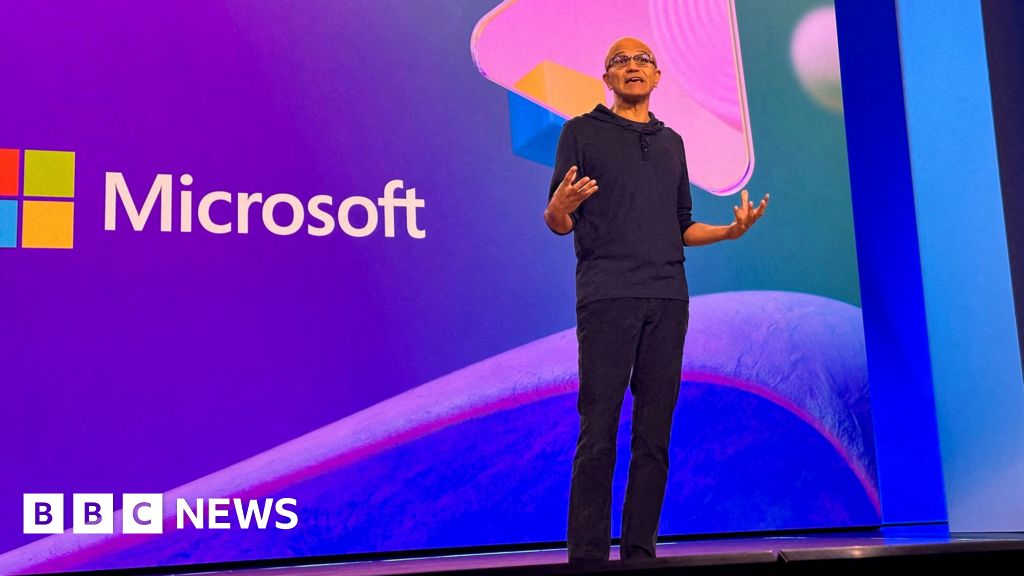
The titans of the technology sector are ramping up their spending on artificial intelligence, as they rush to reap the benefits of an AI boom that has pushed stocks to record highs.
Earnings reports from Meta, Alphabet and Microsoft on Wednesday reaffirmed the colossal amounts of money these firms are shelling out for everything from data centres to chips, even as questions swirl about returns on the investments.
Meta said its capital expenditures for 2025 will be between $70bn (£53bn) to $72bn, up from an earlier estimate of $66bn to $72bn.
Its spending growth in 2026 is poised to be “notably larger” than this year, the company said. Meta is seeking to compete with companies like OpenAI.
On a call with analysts, Meta boss Mark Zuckerberg defended the firm’s investments, saying he saw big opportunities ahead driven by AI, both in terms of new products and for honing its current business selling ads and feeding people content.
“The right thing to do is accelerate this,” he said, adding later: “We are sort of perennially operating the family of apps and ads business in a compute-starved state at this point.”
Google and YouTube owner Alphabet similarly raised its forecast for this year to $91bn to $93bn, up from an earlier outlook of $85bn in the summer, in the latest sign of its increasingly lofty spending goals,
That estimate is nearly double the capital expenditures that the company reported for 2024.
Microsoft’s capital expenditures in the quarter through to 30 September, including on data centres, totalled $34.9bn, the company reported on Wednesday – a larger spending figure than analysts had expected, and up from $24 billion in the previous quarter.
“We continue to increase our investments in AI across both capital and talent to meet the massive opportunity ahead,” Satya Nadella, Microsoft’s chief executive, said.
Azure, the firm’s cloud computing unit, and Microsoft’s other AI products have a “real-world impact”, Mr Nadella said.
Exuberance among investors about massive AI spending has helped all three tech firms outperform the broader S&P 500 index.
But Wall Street is also focused on whether these firms’ investments are starting to yield tangible returns.
The two things holding up the US economy in the last several months have been consumers and AI-related business investments, said Aditya Bhave, senior US economist at Bank of America.
“To the extent that the latter remains strong, it’s a bullish signal for GDP growth,” he said.
Business
Microsoft Azure outage: Websites come back online
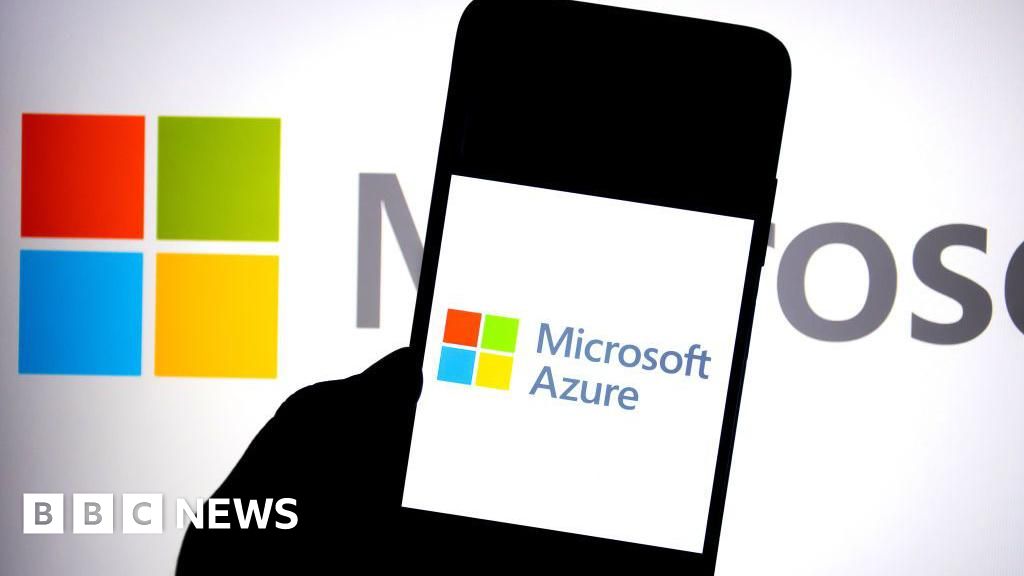
Imran Rahman-Jones,Technology reporter and
Lily Jamali,North America Technology correspondent
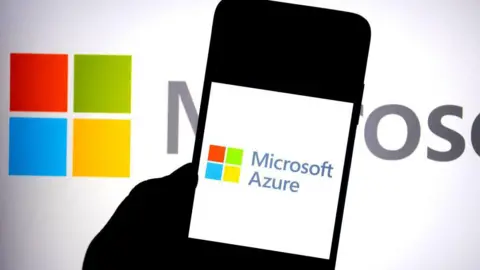 Getty Images
Getty ImagesWebsites for Heathrow, NatWest and Minecraft returned to service late on Wednesday after experiencing problems amid a global Microsoft outage.
Outage tracker Downdetector showed thousands of reports of issues with a number of websites around the world over several hours.
Microsoft said some users of Microsoft 365 saw delays with Outlook among other services, but by 21:00GMT, many websites that went down were once again accessible after the company restored a prior update.
The company’s Azure cloud computing platform, which underpins large parts of the internet, had reported a “degradation of some services” at 16:00 GMT.
It said this was due to “DNS issues” – the same root cause of the huge Amazon Web Services (AWS) outage last week.
Amazon said AWS was operating normally.
Other sites that were impacted in the UK include supermarket Asda and mobile phone operator O2 – while in the US, people reported issues accessing the websites of coffee chain Starbucks and retailer Kroger.
The M&S website remained unavailable late on Wednesday even after many others returned online.
Microsoft said business Microsoft 365 customers experienced problems.
Some web pages on Microsoft also directed users to an error notifications that read “Uh oh! Something went wrong with the previous request.”
The tech giant resorted to posting updates to a thread on X after some users reported they could not access the service status page.
While NatWest’s website was temporarily impacted, the bank’s mobile banking, web chat, and telephone customer services remained available during the outage.
Meanwhile, business at the Scottish Parliament was suspended because of technical issues with the parliament’s online voting system.
The outage prompted a postponement of debate over land reform legislation that could allow Scotland to intervene in private sales and require large estates to be broken up.
A senior Scottish Parliament source told BBC News they believed the problems were related to the Microsoft outage.
Azure’s crucial role online
Exactly how much of the internet was impacted is unclear, but estimates typically put Microsoft Azure at around 20% of the global cloud market.
The firm said it believed the outage was a result of “an inadvertent configuration change”.
In other words, a behind-the-scenes system was changed, with unintended consequences.
The concentration of cloud services into Microsoft, Amazon and Google means an outage like this “can cripple hundreds, if not thousands of applications and systems,” said Dr Saqib Kakvi, from Royal Holloway University.
“Due to cost of hosting web content, economic forces lead to consolidation of resources into a few very large players, but it is effectively putting all our eggs in one of three baskets.”
Recent outages have laid bare the fragility of the modern-day internet, according to engineering professor Gregory Falco of Cornell University.
“When we think of Azure or AWS, we think of a monolithic piece of technology infrastructure but the reality is that it’s thousands if not tens of thousands of little pieces of a puzzle that are all interwoven together,” said Mr Falco.
He noted that some of those pieces are managed by the companies themselves while others are overseen by third parties such as CrowdStrike, which last year deployed a software update that affected more than eight million computers run on Microsoft systems.

-

 Fashion1 week ago
Fashion1 week agoChinese woman charged over gold theft at Paris Natural History Museum
-

 Entertainment1 week ago
Entertainment1 week agoJohn Grisham unveils his first-ever mystery, “The Widow”
-

 Tech1 week ago
Tech1 week agoEaster Island’s Moai Statues May Have Walked to Where They Now Stand
-

 Tech1 week ago
Tech1 week agoThis Smart Warming Mug Is Marked Down by $60
-

 Fashion1 week ago
Fashion1 week agoThe North Face and Cecilie Bahnsen launch second collaboration
-
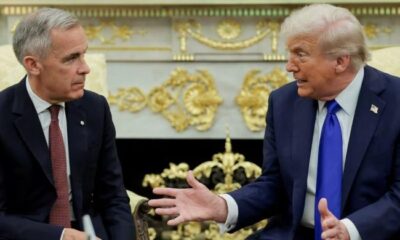
 Politics5 days ago
Politics5 days agoTrump slams ‘dirty’ Canada despite withdrawal of Reagan ad
-
Sports1 week ago
These five NBA players could be ready for an all-star breakthrough
-

 Fashion1 week ago
Fashion1 week agoNew EU strategy proposed to shape global clean, resilient transition








